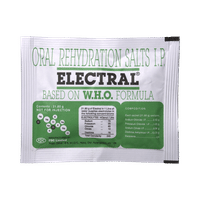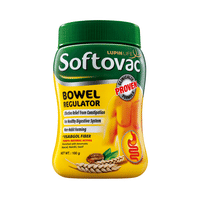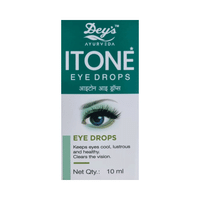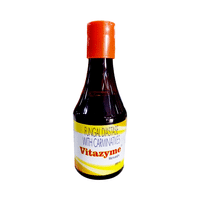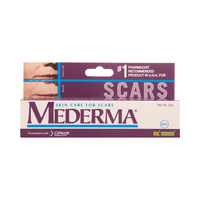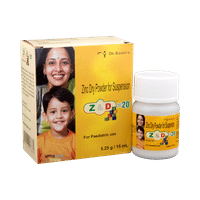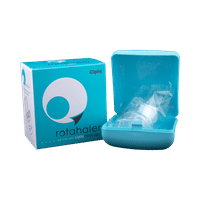Rs.157for 1 tube(s) (10 gm Ointment each)
food interaction for Fluticin M
alcohol interaction for Fluticin M
pregnancy interaction for Fluticin M
lactation interaction for Fluticin M
medicine interaction for Fluticin M
food
alcohol
pregnancy
lactation
medicine
No interaction found/established
No interaction found/established
Fluticin M Ointment may be unsafe to use during pregnancy. Although there are limited studies in humans, animal studies have shown harmful effects on the developing baby. Your doctor will weigh the benefits and any potential risks before prescribing it to you. Please consult your doctor.
CONSULT YOUR DOCTOR
Fluticin M Ointment is probably safe to use during breastfeeding. Limited human data suggests that the drug does not represent any significant risk to the baby.
SAFE IF PRESCRIBED
No interaction found/established
SALT INFORMATION FOR Fluticin M
Fluticasone Propionate(0.005% w/w)
Uses
Fluticasone Propionate is used in the treatment of severe allergic reactions and skin conditions with inflammation & itching.
How it works
Fluticasone Propionate is a steroid medicine. It works by blocking the production of certain chemical messengers that make the skin red, swollen and itchy due to skin conditions such as atopic eczema, allergic contact dermatitis, and psoriasis.
Common side effects
Headache, Cough, Nosebleeds, Increased glucose level in blood, Cataract, Taste change, Nasopharyngitis (inflammation of the throat and nasal passages), Upper respiratory tract infection, Sinus inflammation, Stomach discomfort, Fungal infection of oropharynx, Tremors, Palpitations, Voice change, Itching, Burning sensation, Insomnia (difficulty in sleeping), Aggression, Anxiety, Psychomotor hyperactivity, Hypersensitivity, Decreased potassium level in blood, Arrhythmia (irregular heartbeats), Bronchospasm, Angina (heart related chest pain), Prolonged QTc interval, Glaucoma, Vasculitis, Cushing syndrome, Telangiectasia, Pigmentation disorders, Hypertrichosis (excessive hair growth), Allergic contact dermatitis
Mupirocin(2% w/w)
Uses
Mupirocin is used in the treatment of bacterial infections.
How it works
Mupirocin is an antibiotic. It kills the bacteria that cause skin infections by preventing the synthesis of essential proteins necessary for the survival of bacteria. Thus, it prevents the skin infection from spreading.
Common side effects
Rash, Itching, Burning sensation, Stinging sensation, Pain, Nausea, Erythema (skin redness), Dry skin, Tenderness, Swelling, Contact dermatitis, Anaphylactic reaction, Red spots or bumps, Angioedema (swelling of deeper layers of skin)
SUBSTITUTES FOR Fluticin M
15 Substitutes
15 Substitutes
Sorted By
 Rs. 243.50pay 46% more per gm of Ointment
Rs. 243.50pay 46% more per gm of Ointment Rs. 312.10pay 91% more per gm of Ointment
Rs. 312.10pay 91% more per gm of Ointment Rs. 67.60save 14% more per gm of Ointment
Rs. 67.60save 14% more per gm of Ointment Rs. 77.81save 1% more per gm of Ointment
Rs. 77.81save 1% more per gm of Ointment Rs. 173.44save 15% more per gm of Ointment
Rs. 173.44save 15% more per gm of Ointment
Expert advice FOR Fluticin M
- You have been prescribed Fluticasone Propionate for treating itchy, red rashes, and skin irritation associated with skin conditions such as atopic eczema, allergic contact dermatitis, and psoriasis among others.
- Don't use it more often or for longer than advised by your doctor.
- Don't apply it to broken or infected areas of skin, face, eyes, or eyelids.
- Don't cover the area being treated with airtight dressings such as bandages unless directed by a doctor, as this may increase the risk of side effects.
- If you think the area of skin you are treating has become infected you should stop using Fluticasone Propionate and consult your doctor.
- Consult your doctor if your skin condition has not improved after two weeks of treatment.
Frequently asked questions FOR Fluticin M
Fluticasone Propionate
Q. What is Fluticasone Propionate? What is it used for?
Fluticasone Propionate belongs to a group of medicines called steroids, also known as corticosteroids. Fluticasone Propionate is used to treat various allergic skin conditions such as eczema and atopic dermatitis. Fluticasone Propionate effectively reduces symptoms associated with such conditions such as swelling, itching and redness.
Q. How does Fluticasone Propionate work?
Fluticasone Propionate works by decreasing the inflammation caused by allergies. It reduces inflammation by blocking the release of certain natural substances that cause allergic symptoms such as swelling, redness and pain.
Q. How long does Fluticasone Propionate take to start working?
The time Fluticasone Propionate requires to start working differs from person to person. However, you may get relief within 8 hours of starting Fluticasone Propionate. It may even take several days before you see maximum benefits. In order to improve your symptoms faster, it is important to take the medicine regularly as it increases the efficiency.
Mupirocin
Q. Is Mupirocin used for diaper rash?
Mupirocin is an antibacterial medicine and will only help if the diaper rash is due to bacterial infection.
Q. For how long do I need to use Mupirocin?
Use Mupirocin for the duration advised by your doctor. The bacteria are normally cleared from your skin within 10 days of starting the treatment. It is not recommended to use this medicine for more than 10 days. If your skin condition does not improve within 3-5 days, see your doctor.
Q. How should I use Mupirocin?
Follow the directions given by your doctor carefully. Wash your hands before applying Mupirocin. Apply the ointment to the infected area of skin 2-3 times daily or as told by your doctor. You can cover the treated area with a dressing or leave it open as per your doctor’s advice.













